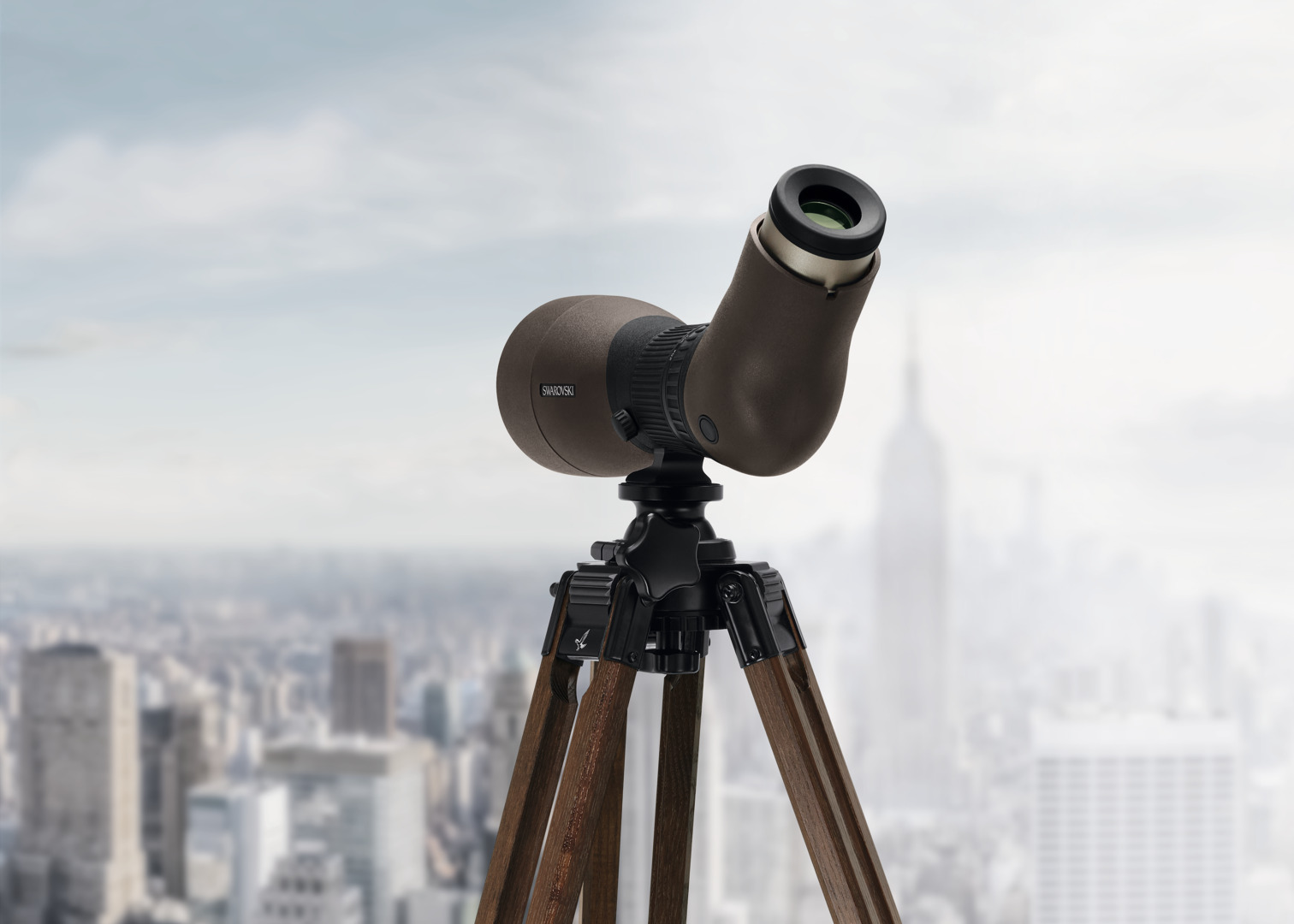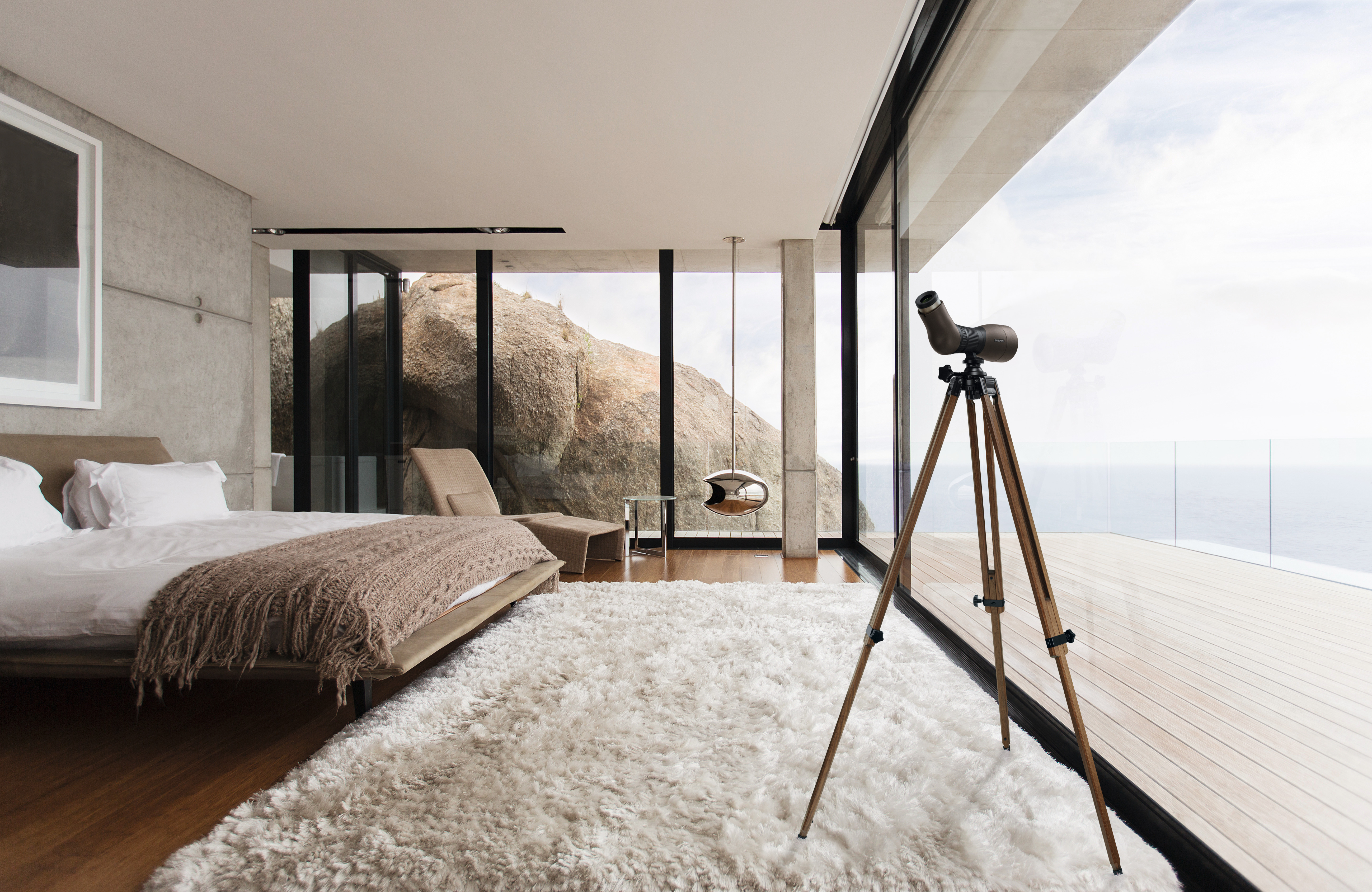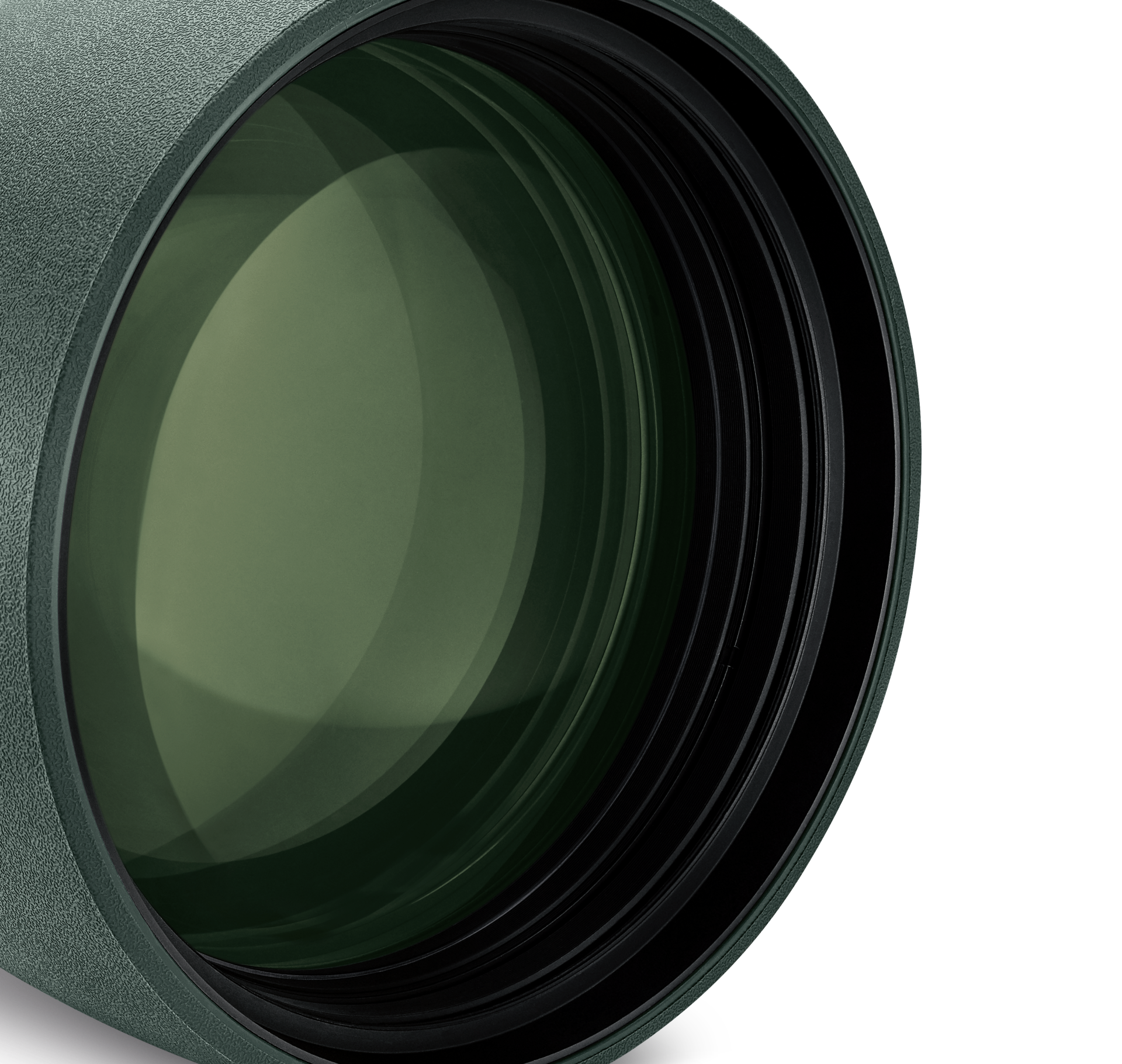What to consider when choosing your spotting scope
 Objective lens diameter
Objective lens diameter
The objective lens diameter specifies how much light can enter the optics. This makes it a key factor in an instrument’s performance, for example, in twilight. The bigger the objective lens diameter, the more light the objective lens can capture. The darker the surroundings, the larger the objective lens diameter needs to be. Check the precise product name as the number after the ‘x’ specifies the objective lens diameter in millimeters. For example, a device with the suffix 10x42 has an objective lens with a diameter of 42 mm.
 Objective lens diameter
Objective lens diameter
The objective lens diameter specifies how much light can enter the optics. This makes it a key factor in an instrument’s performance, for example, in twilight. The bigger the objective lens diameter, the more light the objective lens can capture. The darker the surroundings, the larger the objective lens diameter needs to be. Check the precise product name as the number after the ‘x’ specifies the objective lens diameter in millimeters. For example, a device with the suffix 10x42 has an objective lens with a diameter of 42 mm.
 Variable magnification
Variable magnification
Variable magnification makes it possible to adjust the magnification flexibly within a specific range. In contrast to fixed magnification, it allows you to zoom from the lower value to the higher value. However, as the magnification increases, the field of view, i.e. the image section, becomes smaller. Check the precise product name as the number in front of the ‘x’ specifies the magnification. For example, 30-70x95 is a device with a variable magnification from 30x to 70x.
 Field of view
Field of view
The field of view describes the size of the image section that can be seen through the optics. This is specified either in meters (width) at a distance of 1000 meters (m/1000m), or feet (width) at a distance of 1000 yards (ft/1000 yds), or as an angle (degrees). The higher the magnification, the smaller the field of view.
Binoculars have a large field of view, which means you can see a wide area. Spotting scopes have a higher magnification, which makes the field of view much smaller, but you can see more detail.
 Weight
Weight
The weight specifies how heavy or light the device is (in grams or ounces). Do you intend to do a lot of walking? Lightweight equipment is a priority in this case.







 ATX Interior 25-60x85
ATX Interior 25-60x85 Customer ServiceMO - TH 8:00 - 17:00 AND FR 8:00 - 12:0000800 3242 5056customerservice@swarovskioptik.com
Customer ServiceMO - TH 8:00 - 17:00 AND FR 8:00 - 12:0000800 3242 5056customerservice@swarovskioptik.com